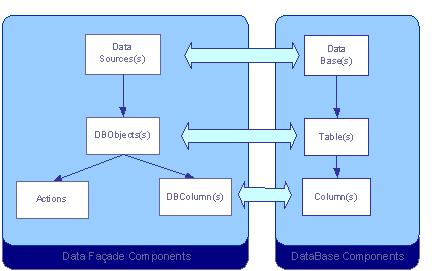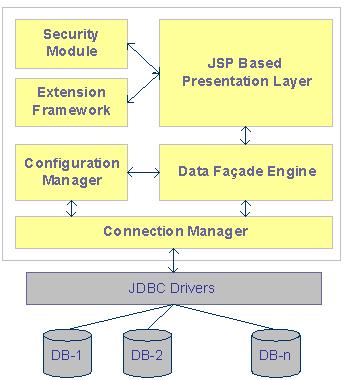

| What Is Data Fašade? Who is it for? Download Data Fašade Architecture Data Fašade in Action User guide Tutorial F.A.Q Blog Contact Us |
Data Fašade ArchitectureBefore getting in to the overall architecture it is important to understand the key conceptual elements of Data Fašade. The high level goal of this framework is to provide a clean, easy to configure user interface for data sources.  Mapping of DatFacade compoenents to Database Components The web based configuration interface provides declarative (contrast to programmatic) process for mapping of Database components to Data Fašade components. Data SourcesData Sources represent the Databases hosting the data to be exposed. Declaration of data sources involves specifying the jdbc drivers, connection url, database security credentials and connection pool parameters. Data Fašade bundles JDBC drivers for Oracle, SQL server, DB2 and ODBC Bridge. Note: After configuring data sources, hosting tomcat instance(s) has to be restarted. DB Objects
DBObjects are the core components of the Data Fašade framework. DB Object represents a database table, it's visual aspects, security and relationships with other tables.
DB Columns are visual representation of data base columns of a given table (associated with the parent DB Object). Actions are the java based extension points provided by Data Fašade to extend the behavioral aspect of the application. Data Fašade ships with an array of actions that can be used for various customizations. Additionally one can write there own actions by extending the Action API for further customization. Please see the Advance user guide for details. The actions can be tied to database record level or table level.  Data Facade Architecture. |